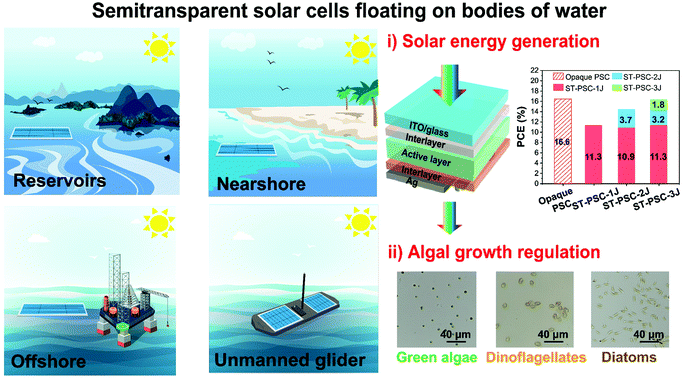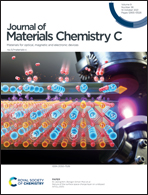Semitransparent polymer solar cells floating on water: selected transmission windows and active control of algal growth†
Abstract
Floating photovoltaic (FPV) systems are gaining attention across the world, which make an important contribution to the green energy revolution and diffuse the heated debate on use of land worldwide. Large-scale FPV systems generally deploy crystalline silicon panels that are brittle, heavy and difficult to integrate. Polymer solar cells (PSCs) are one of the emerging PV technologies to date. The potential deployment of PSCs on bodies of water can combine the unique advantages of organic electronics, which allow them to become semitransparent and simultaneously provide controlled shading and green electricity. So far, little attention has been paid to the impacts of FPV technologies on water bodies and their ecosystems. In this study, we propose a new concept of extending semitransparent PSCs (ST-PSCs) to the field of FPV and focus on exploring the environmental impacts and benefits of placing high-performance ST-PSCs on bodies of water. We demonstrate for the first time that the specific transmittance windows with controlled light intensities provided by ST-PSCs can scale up solar energy generation and regulate the growth of four representative microalgae that are widely distributed in diverse aquatic habitats. This work provides insight into environmentally responsible FPV systems for sustainable management of the important primary production in the aquatic ecosystem, instead of simply blocking the sunlight with conventional opaque solar panels.



 Please wait while we load your content...
Please wait while we load your content...